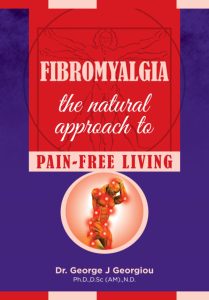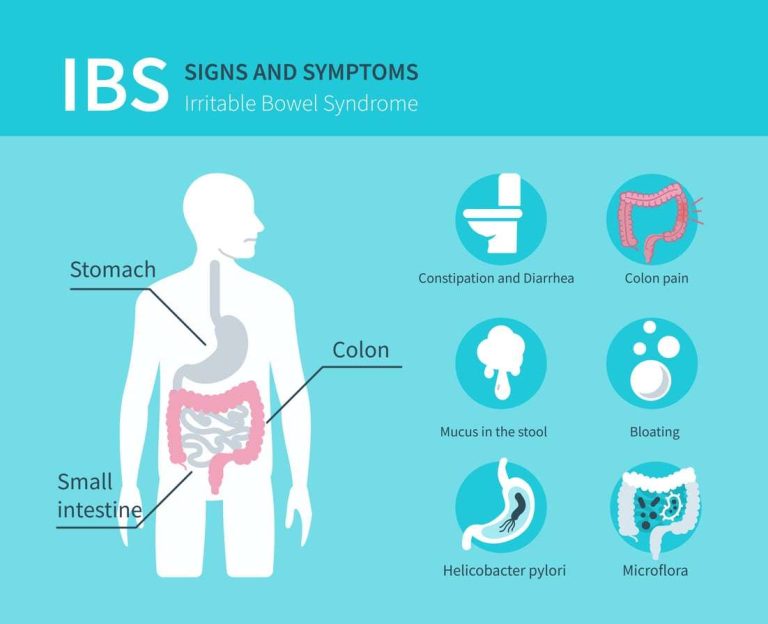Testimonials – Hiatus hernia with Reflux
Case No. 14, Mrs. S, aged 64 – this is a case that was published in Dr. Georgiou’s book entitled “Curing the Incurable with Holistic Medicine: The DaVinci Secret Revealed.”
Main presenting problem: Hiatus hernia with reflux, pain in stomach, bloating, frequent defecation with slushy stools, back problems with pain, sciatica, knee pain, headaches.
Medical diagnosis:
Mrs. S was a chronic patient with many of her symptoms spanning more than 30 years. In 2006 she had a gastroscopy which diagnosed gastro-esophageal reflux disorder (GERD), as well as gastritis and hiatus hernia. She was defecating at least 6 times a day with pain and the stools were slushy.
She also had degenerative changes of the spine and had previously undergone 3 spine operations with fusion of 4 lumbar discs which had degenerated. There was sciatica of 30 years standing with pain in the knees which made it very difficult climbing stairs. Her feet were also diagnosed as being out of alignment, but nothing further was done about this. She also had frequent headaches and was on the borderline of depression, worrying about her deteriorating health and the restrictions this would impose on her active lifestyle.
Holistic diagnosis:
VEGA food intolerance testing showed that she was intolerant to a number of foods such as wheat, lactose and milk products, eggs, chicken, pork, apples, sugar, caffeine and the onion family.
Further VEGA and ART testing showed that she had systemic Candidiasis.
Iris analysis showed that she had a chronic and severe case of hypochlorhydria (low hydrochloric acid secretion) – unfortunately she had been taking H-proton inhibitors for many years which depress further the already deficient production of hydrochloric acid by the stomach. This is a typical scenario that I have seen in hundreds of other cases of GERD. When the stomach reduces its production of hydrochloric acid, this results in protein concentrates spending a lot more time in the stomach in its attempt to digest this food.
This leads to fermentation of the food, with bloating of the stomach and pressure being applied to the cardiac and pyloric sphincter muscles – this results in the gastroesophageal reflex – that is triggered when the stomach is over distended. When it occurs, it causes a special ring of muscle located at the lower end of the oesophagus (cardiac sphincter) to relax. This allows acid to erupt back into the lower oesophagus. Normally, when the food enters the stomach from the oesophagus, this valve is closed. Unlike the stomach, the oesophagus lacks a layer of protective mucus and therefore the refluxed acid can burn the tissue. If this occurs often enough, heartburn, belching and a sensation of fullness can result – a condition doctors call dyspepsia. Over time this hypochlorhydria will lead to the hiatus hernia developing.
The iris analysis also found a weakened pancreas which resulted in a deficiency of digestive enzymes which led to further bloating and distension in the gut. There was a thyroid marking which later was found to be subclinical hypothyroidism based on the Barnes’s Basal Temperature Test. There were also indications of toxicity judging from the murky iris colour in a lymphatic constitution. There was also a subluxation in the lower lumber region of the spine.
Hair Tissue Mineral Analysis showed very low levels of certain minerals and trace elements such as potassium, manganese, boron and molybdenum. Many of these are crucial for bone development, thyroid functioning and enzyme production. There was also some circulating mercury, uranium, arsenic and cadmium.
Holistic treatments:
First, Mrs. S began with an alkaline detoxification diet for 15 days with fruit, steamed vegetables, salads, vegetable juices and herbal teas. She was also given nutritional supplements such as a multivitamin, a multimineral, omega 3,6 and 9 fatty acids for the inflammation, betaine HCl and pepsin to improve the stomach digestion and hypochlorhydria, as well as pancreatic enzymes to help improve the gut digestion. In addition, she was given glucosamine sulphate (2,000 mg daily), calcium with magnesium, aloe vera juice and a herbal drainage formula called Organic Lavage (see chapter 7).
In addition, she was checked and found to have a Rothbart’s foot or a Primus Metatarsus Supinatus[1] foot type which can greatly aggravate the spine and misalign the body posture,[2] also putting pressure on the knees.[3] She was fitted with 6mm proprioreceptor insoles[4] in order to adjust the Rothbart’s foot.
Two weeks into the detoxification and supplement protocol, she had lost 8 lbs in weight, most of which must have been oedematous fluid as her bloating also disappeared; there were no further pains in the stomach and no reflux. The pains in her knees had also improved tremendously. There was a point when she felt light-headed, lethargic and weak – VEGA testing showed that she was reacting to the betaine HCl as her body was not accepting this supplement, probably because of the existing irritation of the stomach lining. When she was asked to rate her improvement as a percentage, she said that she had improved by 95% from the point of starting two weeks ago.
This quick response of the body with a huge percentage improvement in a matter of weeks I have seen on many occasions. Probably the main factor behind this rapid healing response is that the alkaline detoxification diet helps to bring back the body’s pH to an alkaline level, therefore removing much of the inflammation related to an acidic milieu. The removal of many toxic deposits from tissues and organs also helps to accelerate the healing response and anti-inflammatory effect. The addition of the various orthomolecular substances that the body is lacking in further helps to accelerate the healing process.
On the 16.9.08, 10 weeks into her therapy, she had lost 28 lbs or about 14 kilos. Her reflux had now completely gone, stools were forming much better and her back pain, sciatica and knee pain was much better after fitting the proprioreceptor insoles. She had just returned from a vacation with her son in the UK and had walked around Leed’s Castle, a feat that greatly impressed her son who would normally see his mother in pain when trying lesser feats. Indeed, the 8 tablets of Colderol analgesics that she had been taking every day for the last 8 years has now been stopped completely, with no more pain! She was highly elated over this achievement and I rejoiced with her – the stomach would now have a much better chance of healing properly.
By the time she had completed the Da Vinci Candida protocol (see chapter 5) she was functioning very well. Her son had commented that this was the best that he had seen her in over 10 years. Most of her symptoms had now abated completely, with weight stable and taking no more medicinal drugs, something that she had been taking for over 20 years of her life. She is now thoroughly enjoying life and is active on many fronts.
The only issue that requires more work is the stomach which sometimes plays up and causes discomfort, particularly if she eats or drinks something that upsets her. She has not been able to tolerate the betaine HCl and pepsin which is crucial to helping the stomach digest concentrated proteins, something that she is unable to do due to the hypochlorhydria. It may require a new approach with some healing herbs for the stomach, along with digital homeopathics and some PAPIMI treatments to facilitate the healing.
Betaine hydrochloride (HCl) is a nutritional supplement that has been used for over 100 years to safely restore normal gastric acidity and to support healthy gut function. Pepsin also has a long history of medicinal use and is considered very safe when administered to assist digestion, typically in conjunction with hydrochloric acid.
Patient’s own account:
As far as I remember, my problems started 52 years ago at the age of 12. Things got progressively worse with time. My stomach problems became unbearable a couple of years ago. I had a terrible abdominal distention, gastroesophageal reflux, multiple diarrheas, sometimes more than six times per day for six consecutive months, felt easily tired and on the verge of depression. I was a very active person and I became apathic.
I was diagnosed with hiatus hernia and in addition to this; I have also arthritis, problems with my spine which I operated 3 times and knee pain, which was serious enough to stop working at the age of 50, because I couldn’t walk.
I visited my family doctor and he gave me analgesics for my knee pain and at the same time he recommended a gastroenterologist for my stomach. I was using analgesics for over 20 years! I visited a podiatrist who said that it was my back problem and therefore I had a bad alignment of my feet and gave me more analgesics. When I visited the gastroenterologist, he insisted to go for a stomach biopsy and I wasn’t really fond of the idea. Actually, I refused, even though he insisted and his words were definitely not encouraging as they threw me into a deeper and deeper depression.
In June 2008, a friend of mine recommended to pay a visit to the Da Vinci Holistic Health Center. I had nothing to lose. The environment was so friendly and I immediately felt positive. I went through certain tests at the Centre and based upon these results we started the detoxification programme and eventually the Candida protocol.
I could never imagine my progress being so fast and positive. First of all my stomach reflux has completely gone, as well as the bloating. I don’t have any slushy stools, I lost 14 kg and I feel more relaxed and energetic. I can walk now without any significant pain in my knees. The pain has now gone and my son is really amazed to see me walking again without the expression of pain on my face. I can climb the stairs now effortlessly with no pain. I feel like I am reborn! My nutritional habits improved and I don’t take analgesics anymore for the pain. I have to admit that I have a 90% improvement as far as I am concerned thanks to Dr. Georgiou and the Da Vinci Holistic Health Center.
Dr Georgiou’s final comments on Mrs. S:
Mrs. S was an example of a patient who had entered the downward spiral of chronic, degenerative disease but the only attempts to better these conditions was to use a variety of drugs for symptom suppression. Analgesics for the pain without addressing the causes of the pain are simply “symptom suppression.”
There were many aetiological factors identified in Mrs. S’s case – one important issue was the digestive problems such as hypochlorhydria in the stomach.
Numerous studies have shown that hydrochloric acid secretion declines with advancing age. In one study US researchers found that over 30 percent of men and women past the age of 60 suffer from atrophic gastritis, a condition marked by little or no acid secretion.[5] A second study found that up to 40% of postmenopausal women have no basal gastric acid secretions.[6]
In a second study involving 3,484 subjects, researchers found that among both males and females, 27% suffered from achlorhydria, with the greatest incidence (39.8%) occurring in females aged 80 to 89 years.[7]
Researchers in Japan have also measured a similar age-related drop in gastric acidity in elderly Japanese subjects. In 1984 researchers found that 60 percent of Japanese men and women over 50 years age suffered from achlorhydria. New research based on data collected from 1989 to 1999 continued to substantiate a substantial age-related decrease in stomach acid production, though the total percentage of achlorhydric subjects dropped from 60 percent to 40 percent.[8]
Hydrochloric acid (HCl) initiates the digestion of protein in the stomach by converting pepsinogen into the proteolytic enzyme, pepsin. Once formed, pepsin acts to break proteins into smaller peptides that can be absorbed by the small intestine. Without adequate gastric secretions, incompletely digested macromolecules can be absorbed into the systemic circulation.
HCl supports the digestion and absorption of carbohydrates, fats, and vitamins A and E by stimulating the release of pancreatic enzymes and bile into the small intestine.
HCl also aids in the absorption and assimilation of vitamins and minerals such as folic acid, ascorbic acid, beta-carotene and iron, by increasing their bioavailability and effecting their release from food. Jonathan Wright MD, Medical Director of the Tahoma Clinic, reports observing that a number of minerals and micro-trace elements are poorly absorbed in cases of low stomach acid, including calcium, magnesium, zinc, copper, chromium, selenium, manganese, vanadium, molybdenum and cobalt.[9]
Other factors in Mrs. S’s case were mineral and vitamin deficiencies, Rothbart’s foot affecting the body posture, spine and knees, heavy metals facilitating the degeneration due to free radical damage, food intolerance causing further inflammation and systemic Candidiasis releasing 79 toxins which further aggravated these conditions. On top of all this was the worry that her body was degenerating and there was not much that she could do to stop this, even though she was trying hard to get the help that she desperately needed.
All these causative factors and more cannot simply disappear with the use of medication – they need to be identified and off-loaded, then the body can be helped to repair and rebuild – this is the essence of the holistic approach to healing that is demonstrated here.
——————————————————————————–
[1] Rothbart BA, Medial Column Foot Systems: An Innovative Tool for Improving Posture. Journal of Bodywork and Movement Therapies (6)1:37-46, 2002.
[2] Rothbart BA, Liley P, Hansen, el al. Resolving Chronic Low Back Pain. The Foot Connection. The Pain Practitioner (formerly American Journal of Pain Management) 5(3): 84-89, 1995.
[3] Rothbart BA, Yerratt M. An Innovative Mechanical Approach to Treating Chronic Knee Pain: A BioImplosion Model. The Pain Practitioner (formerly American Journal of Pain Management) 4(3): 13-18, 1994.
[4] Rothbart BA. Proprioceptive Insoles. From a Podiatric Point of View. Health and Healing Wisdom (Price-Pottinger Nutrition Foundation Journal) Vol 29(3):11, 2005.
[5] Krasinski SD, Russell RM, Samloff IM, Jacob RA, Dallal GE, McGandy RB, Hartz SC. Fundic atrophic gastritis in an elderly population. Effect on hemoglobin and several serum nutritional indicators. J Am Geriatr Soc. 34(11):800-6, Nov 1986.
[6] Grossman MI, Kirsner JB, Gillespie IE. Basal and histalog-stimulated gastric secretion in control subjects and in patients with peptic ulcer or gastric cancer. Gastroenterology 45:15-26, 1963.
[7] Sharp GS, Fister HW. The diagnosis and treatment of achlorhydria: ten-year study. J Amer Ger Soc 15:786-791, 1967.
[8] Young DG. A stain for demonstrating Helicobacter pylori in gastric biopsies. Biotech Histochem 76(1):31-4, Jan 2001.
[9] Wright JV. Treatment of childhood asthma with parenteral vitamin B12, gastric re-acidification, and attention to food allergy, magnesium and pyridoxine. Three case reports with background and an integrated hypothesis. J Nutr Med 1:277-282, 1990.
All supplements used in this protocol are available from www.worldwidehealthcenter.net
Contact us or book an appointment now









